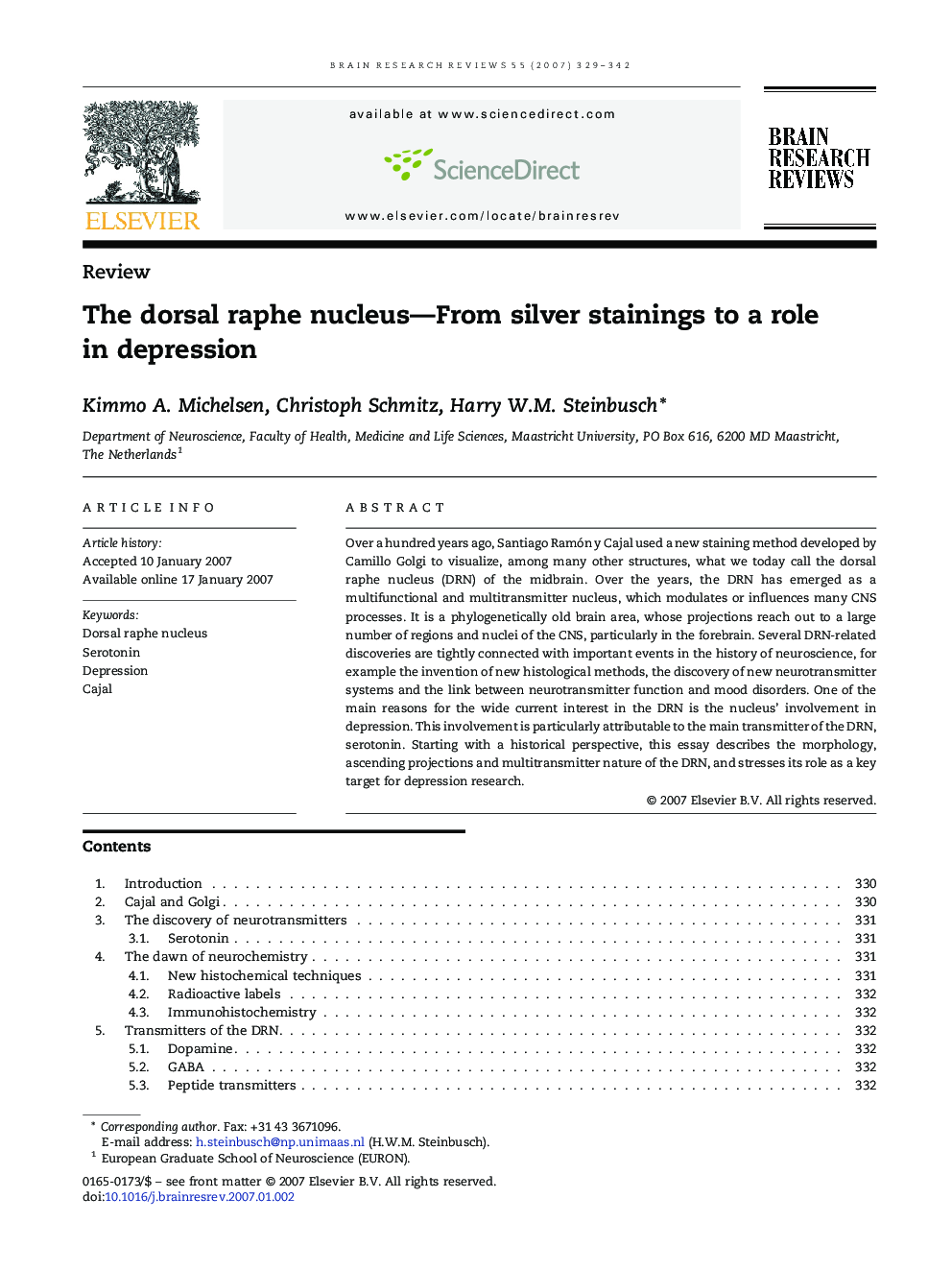| Article ID | Journal | Published Year | Pages | File Type |
|---|---|---|---|---|
| 4333954 | Brain Research Reviews | 2007 | 14 Pages |
Over a hundred years ago, Santiago Ramón y Cajal used a new staining method developed by Camillo Golgi to visualize, among many other structures, what we today call the dorsal raphe nucleus (DRN) of the midbrain. Over the years, the DRN has emerged as a multifunctional and multitransmitter nucleus, which modulates or influences many CNS processes. It is a phylogenetically old brain area, whose projections reach out to a large number of regions and nuclei of the CNS, particularly in the forebrain. Several DRN-related discoveries are tightly connected with important events in the history of neuroscience, for example the invention of new histological methods, the discovery of new neurotransmitter systems and the link between neurotransmitter function and mood disorders. One of the main reasons for the wide current interest in the DRN is the nucleus' involvement in depression. This involvement is particularly attributable to the main transmitter of the DRN, serotonin. Starting with a historical perspective, this essay describes the morphology, ascending projections and multitransmitter nature of the DRN, and stresses its role as a key target for depression research.
